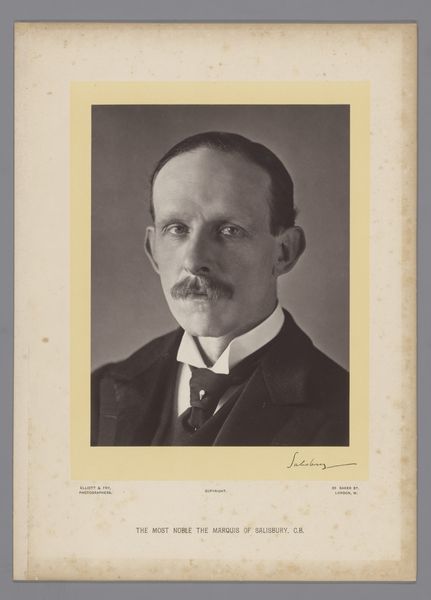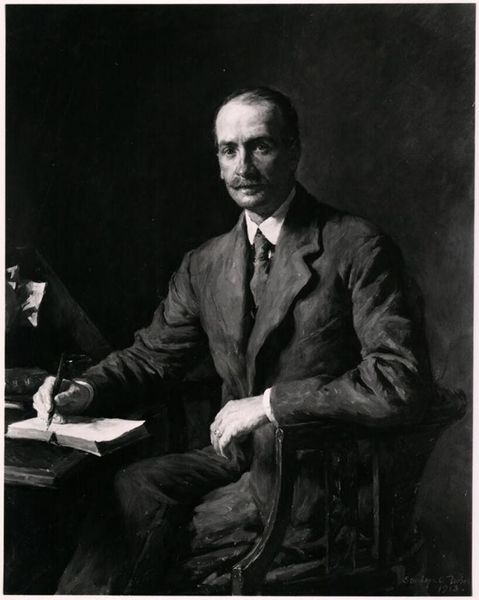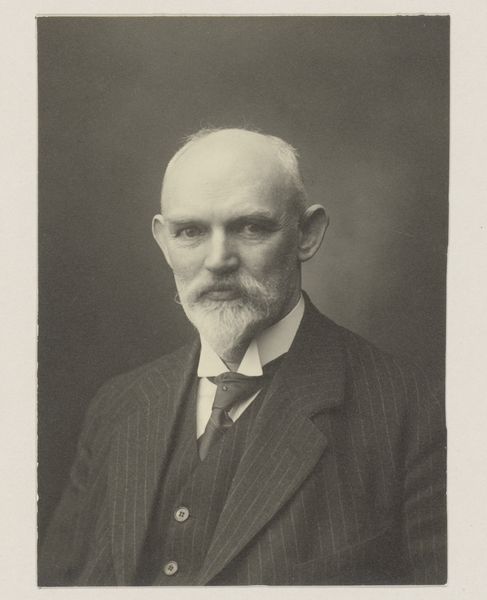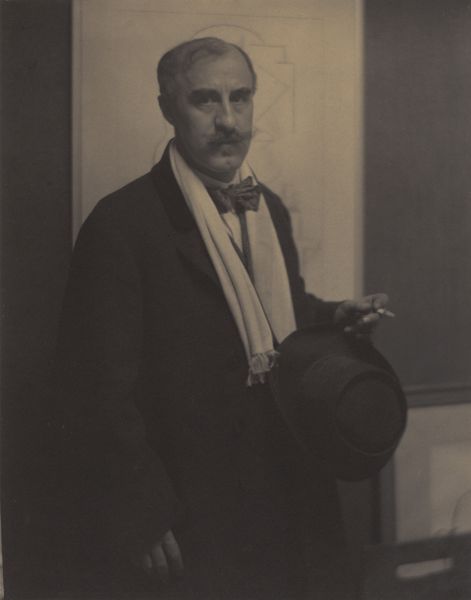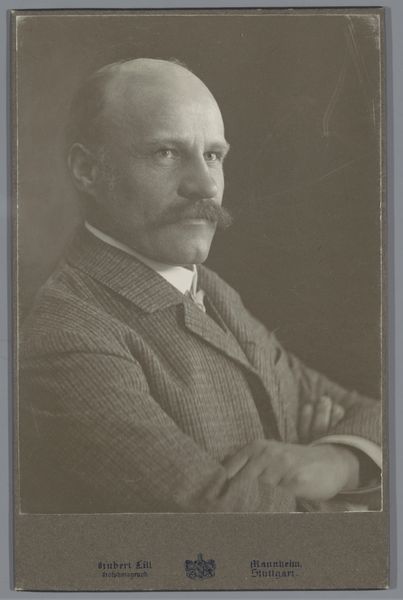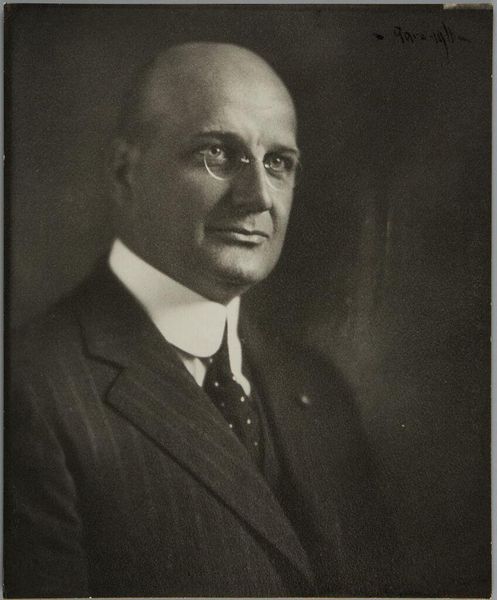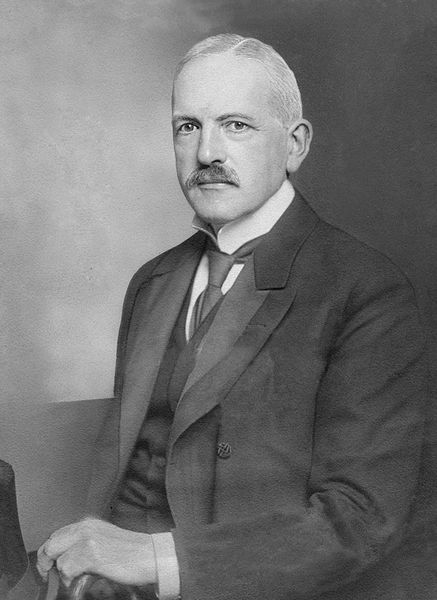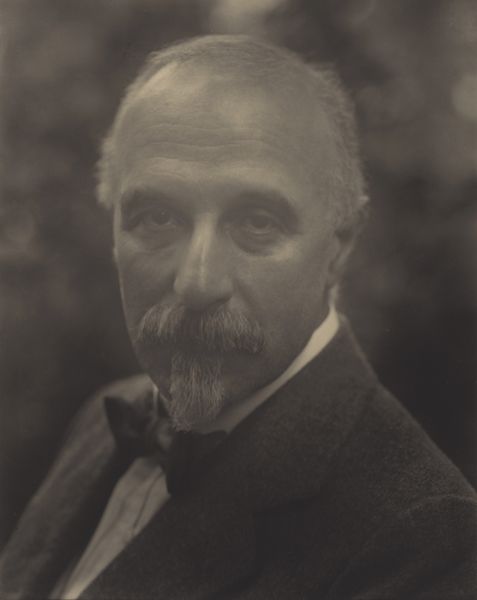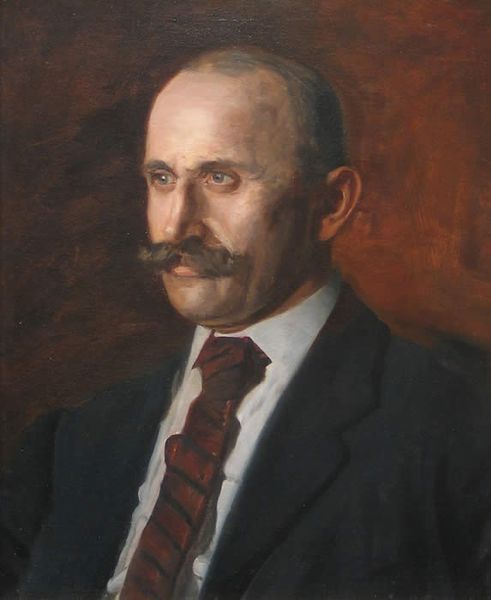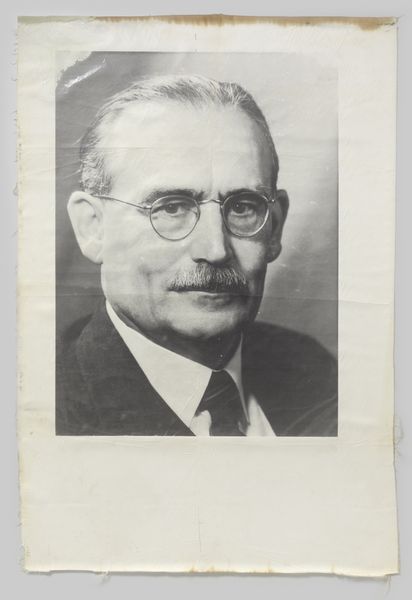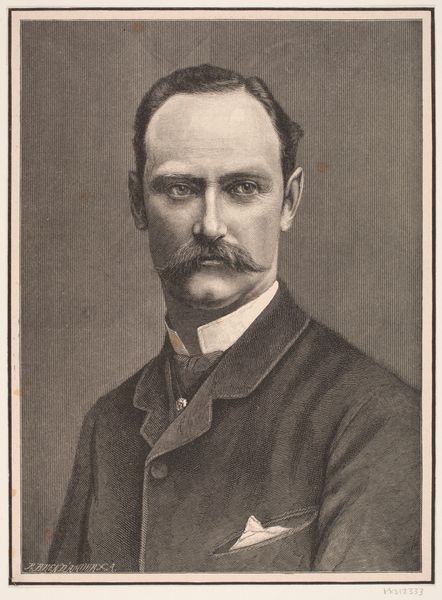
photography
#
portrait
#
photography
#
modernism
Dimensions: sheet (trimmed to image): 22.5 x 18.3 cm (8 7/8 x 7 3/16 in.)
Copyright: National Gallery of Art: CC0 1.0
Curator: What do you make of this portrait of Marius de Zayas, taken by Alfred Stieglitz in 1913? Immediately, I see a figure steeped in a subtle, sepia-toned gravity. It's quite striking. Editor: I feel like I’ve been transported back in time, right into some smoky Parisian salon. The lighting, the formal attire… There’s an air of serious intellectualism here. And that absolutely splendid moustache. It is rather perfect. Curator: Stieglitz really masters tonal gradation here; from the delicate highlight on de Zayas’ forehead to the profound shadows shaping his jawline, he constructs this very particular vision of his subject. I’m intrigued by the geometric abstract shapes discernible in the background, too. Do you think this offers additional context? Editor: I do, perhaps framing de Zayas within a world of nascent modernist aesthetics. And yes, the lighting definitely contributes to the atmosphere of quiet intensity. His eyes seem to be looking beyond the photographic frame… almost questioning the viewer directly. Is it wisdom, challenge, melancholy? Perhaps it's all three! Curator: Indeed, the interplay between the realistic depiction of de Zayas and the abstract background introduces a spatial ambiguity that complicates any simple reading. Semiotically, it invites speculation about the relationship between subject and environment. And of course we could deconstruct his gaze according to Lacanian precepts, seeing it as symbolic of lack. Editor: I prefer my theory a bit less… Lacanian, though I recognize what you are saying. I love this image. He looks as though he is ready to give you both life advice and your last rites at the same time. Stieglitz captured something indelible here. I am almost envious! Curator: He definitely manages to blend aesthetic rigor with this almost intimate portrayal of artistic companionship. What I love, and perhaps appreciate most, is how this image continues to reveal subtleties, regardless of how often one encounters it. Editor: Absolutely. Each viewing becomes a dialogue, doesn’t it? It keeps you engaged with what is visible, but perhaps more interestingly, what isn't.
Comments
No comments
Be the first to comment and join the conversation on the ultimate creative platform.
